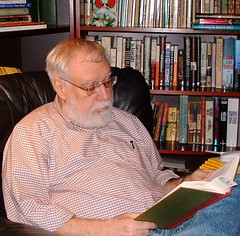Putting the good doctor back together

My son, the doctor, the philosopher, the rabbi, the lawyer. And you still don’t call--He was one of history’s great geniuses. He was a world-famous physician and scientist at a time when Christianity did it’s best to suppress science and scientific medicine. In his spare time, he codified Jewish law and for all practical purposes, created the Judaism of the last 1,000 years. He absorbed Aristotle and influence Aquinas. He may even be the reason why there are so many Jewish doctors. And he would love what’s about to happen.
Moses Maimonides (Moshe ben Maimon), the 12th century philosopher-physician, left a good bit of his life’s work in a hole-in-the-wall storage room in a Cairo synagogue. Fragments of his life’s work are scattered in libraries around the world after being recovered from the receptacle or genizah, along with the works of other Jewish philosophers. Now, thanks to the Internet, scholars in Britain are going to piece the fragment together to see what they contain.
There is neither the space nor the time to go into his work and influence. I’ve begun a course on him and know little. [He’d like that] Click here for a start. The man is huge. His influence on the world in general, Judaism in particular, is hard to exaggerate. He is referred to in yeshivot in the present tense as if he was in the next room. Actually, he may be. He not only codified Jewish law, he produced the 13 Articles of Faith that underlies post-sacrificial Judaism. Back to the science.
The genizah is the place they hid manuscripts that contained God’s name and therefore could not be thrown out. The Cairo genizah was discovered in 1896 and is one of the great treasure troves of Jewish literature. Scraps of documents in the genizah were widely distributed. About 10,000 pieces are in the University of Manchester’s John Rylands University Library, but 300,000 tiny fragments are known to exist.
 Using a $670,000 grant from the British government, the Manchester Center for Jewish Studies researchers will post images of the fragments on the World Wide Web. Others around the world will post what they have and then the community will try to reassemble the pieces into a coherent whole on the Internet, a bit from here and a bit from there. Until current imaging technology, that was impossible. No one has any idea what we will learn from this, which is exactly the point.
Using a $670,000 grant from the British government, the Manchester Center for Jewish Studies researchers will post images of the fragments on the World Wide Web. Others around the world will post what they have and then the community will try to reassemble the pieces into a coherent whole on the Internet, a bit from here and a bit from there. Until current imaging technology, that was impossible. No one has any idea what we will learn from this, which is exactly the point.Maimonides would love it. “Teach thy tongue to say 'I do not know,' and thou shalt progress.” Yes, doctor.

